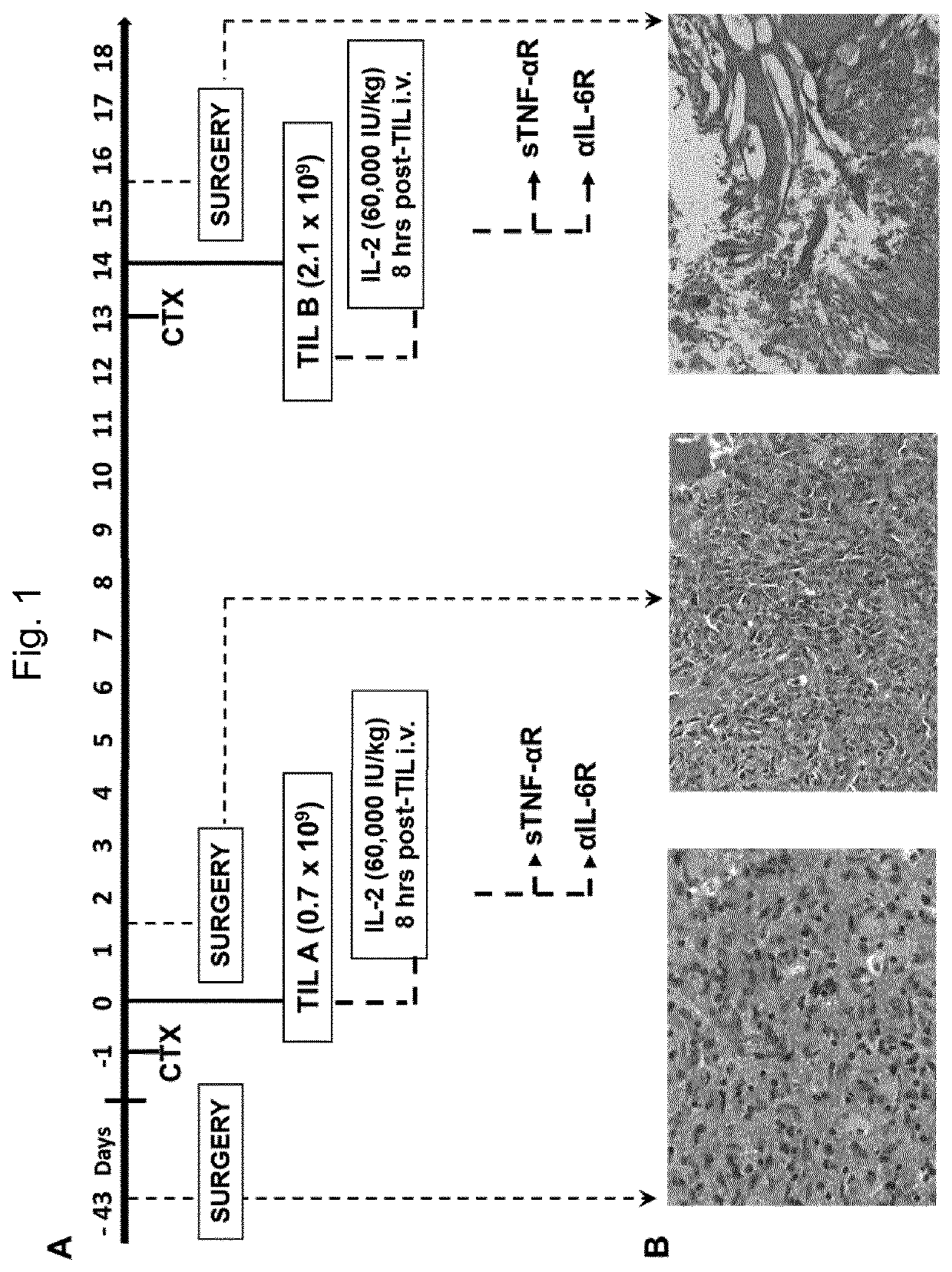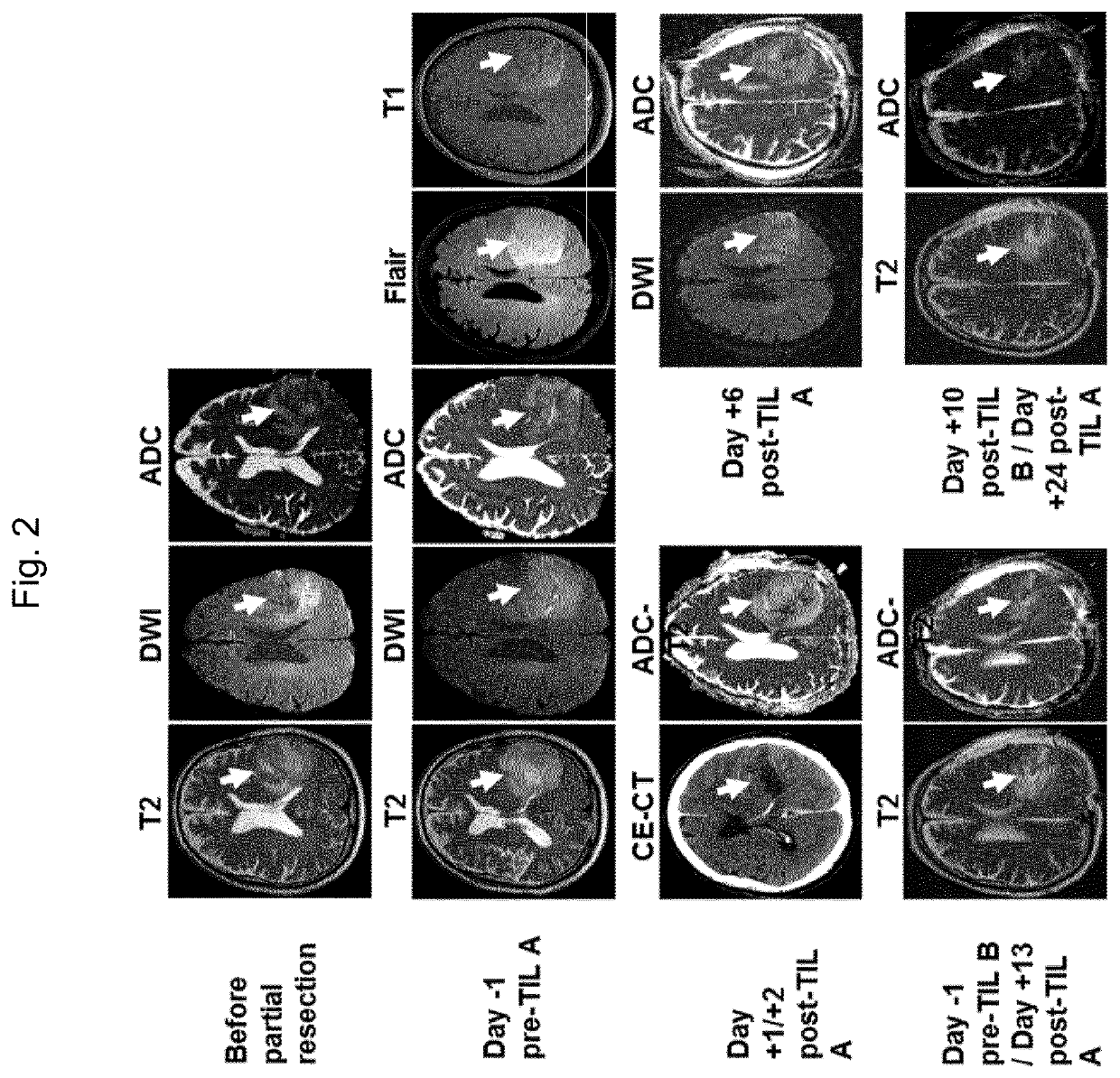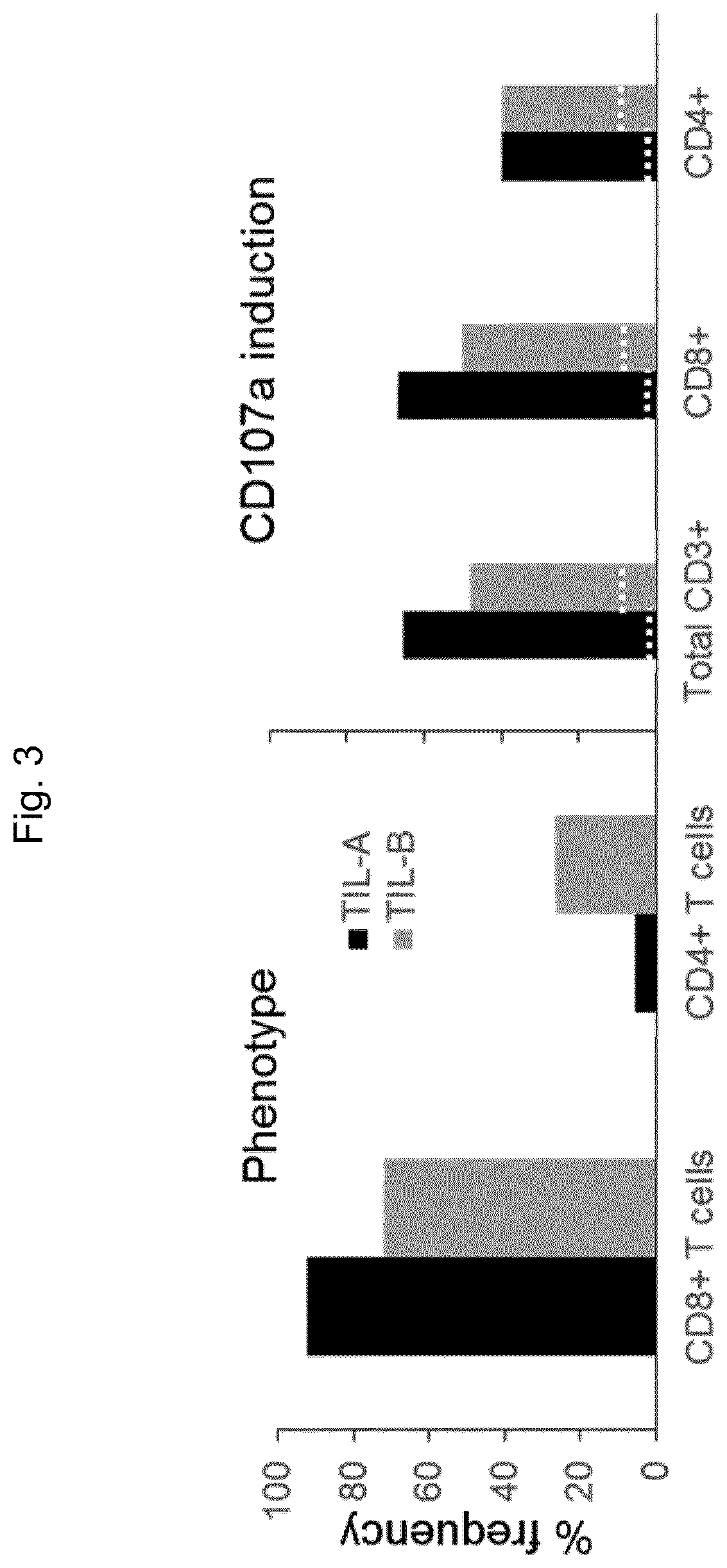Method for the treatment of a tumor patient with adoptive t cell immunotherapy
a tumor patient and immunotherapy technology, applied in the field of tumor patients treated with adoptive t cell immunotherapy, can solve the problems of not being able to validate the strategy in clinical trials, severe side effects in already weakened patients, etc., and achieve the effect of high cell number, reduced risk of overloading the organism with immune cells, and high variability
- Summary
- Abstract
- Description
- Claims
- Application Information
AI Technical Summary
Benefits of technology
Problems solved by technology
Method used
Image
Examples
example 1
and Expansion of TIL and from GBM Patients
[0113]TIL were isolated from the GBM biopsy, cultured in medium containing IL-2, IL-15 and IL-21 (the cytokines may be, for example, obtained from Miltenyi, Bergisch Gladbach, Germany) first in 24-well plates in Cellgro medium (Cell Genix GmbH, Heidelberg, Germany) supplemented with human serum (10%), OKT3 (anti-human CD3 antibody, which may be, for example, obtained from Miltenyi) and allogeneic, 55-Gy irradiated feeder cells added on day 3 (1×106 cells), followed by rapid expansion using OKT3 (30 μg / mL) and allogeneic, 55-Gy irradiated feeder cells. GMP-scale production of TIL for clinical use was carried out by Zellwerk GmbH (Berlin, Germany) using the ISO 13485-certified close perfusion bioreactor cell cultivation platform for advanced therapeutic medicinal products (ATMPs)17.
example 2
Treatment and Tumor Progression
[0114]An overview of a representative treatment and the respective tumor progression is provided in FIG. 1. One day prior to TIL transfer the patient received cyclophosphamide dosed at 60 mg / kg. The next day, 0.7×109 TIL (TIL-A) were administered by the intravenous route (i.v.) within 45 min. The TIL infusion was supported with a single dose of IL-2 (60,000 IU / kg, i.v.) administered 8 hours later as can be seen in FIG. 1, combined with infusion of anti-IL-6 receptor antibody (αIL-6R) and soluble tumor necrosis factor receptor (sTNR-αR) 24 hours later to prevent further cytokine toxemia. The patient was closely monitored for adverse events (AEs) and clinical development by MRI or CT according to immunotherapy Response Assessment in Neuro-Oncology (iRANO) recommendations14. The second TIL treatment was administered on day 14 with 2.1×109 TIL (TIL-B) with cyclophosphamide treatment on day 0 and IL-2 administration 8 h post TIL in combination with infusion...
example 3
ng of T Cells in the TIL Cell Product
[0120]Tumor reactivity of cells can be determined by phenotyping the cells within a TIL cell product, i.e. determining the cell composition in the TIL cell product. To perform such a definition of the cell composition in the TIL cell product the following methods were performed.
[0121]3.1 Methods
[0122]3.1.1 Flow Cytometric Analyses
[0123]Flow cytometry was performed to evaluate the phenotype, phorbol-myristate-acetate (PMA)-driven CD107a induction and Treg enumeration prior to TIL infusion.
[0125]1×106 TIL were stained with the following antibodies: anti-human CD3 PE-Cy7 (BD Biosciences, Catalog Number: 563423), anti-human CD4 V450 (BD Biosciences, Catalog Number: 56345) and anti-human CD8a APC-Cy7 (BD Biosciences, Catalog Number: 557834). Acquisition of events was performed using a BD FACS Canto II flow cytometer (BD Biosciences, Stockholm, Sweden).
[0126]3.1.3 CD107a Induction
[0127]1×106 TIL were incubated in RPMI medium...
PUM
| Property | Measurement | Unit |
|---|---|---|
| time | aaaaa | aaaaa |
| concentration | aaaaa | aaaaa |
| concentration | aaaaa | aaaaa |
Abstract
Description
Claims
Application Information
 Login to View More
Login to View More - R&D
- Intellectual Property
- Life Sciences
- Materials
- Tech Scout
- Unparalleled Data Quality
- Higher Quality Content
- 60% Fewer Hallucinations
Browse by: Latest US Patents, China's latest patents, Technical Efficacy Thesaurus, Application Domain, Technology Topic, Popular Technical Reports.
© 2025 PatSnap. All rights reserved.Legal|Privacy policy|Modern Slavery Act Transparency Statement|Sitemap|About US| Contact US: help@patsnap.com



